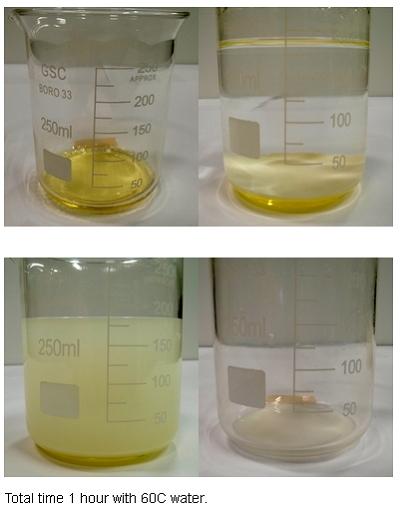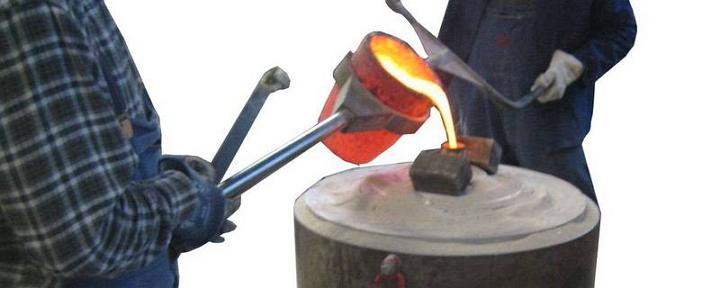 As more and more jewelers and metal workers take up 3D printing, they discover that SLA machines are capable of rendering very high detail and that some resins on the market can be burnt away in a “lost wax” sort of process. But the process takes time. Lots of time.
As more and more jewelers and metal workers take up 3D printing, they discover that SLA machines are capable of rendering very high detail and that some resins on the market can be burnt away in a “lost wax” sort of process. But the process takes time. Lots of time.
Now the scientists at Bucktown Polymers say they’ve developed a 3D printing material which cures rapidly when exposed to light, yet remains water soluble once it has cured.
Bucktown Polymers specializes in the research, development, formulation and manufacture of coatings, inks, resins, adhesives and composites for a wide range of industries. They say this latest material is simply one of hundreds which the company has developed or formulated in the recent past.
 Bucktown Polymers says these new materials have a number of interesting uses in additive manufacturing and casting. Since they change from a liquid into a solid using only light to act as a temporary support structure for other materials or as patterns for casting, the post-cure water soluble support material or pattern can be rapidly dissolved – in just minutes rather than hours – using nothing more than warm water.
Bucktown Polymers says these new materials have a number of interesting uses in additive manufacturing and casting. Since they change from a liquid into a solid using only light to act as a temporary support structure for other materials or as patterns for casting, the post-cure water soluble support material or pattern can be rapidly dissolved – in just minutes rather than hours – using nothing more than warm water.
The company says these water soluble materials can be formulated to be compatible with a wide range of technologies such as SLA, DLP, Inkjet and powder processes, and when used via a 3D printer, they can replace the wax patterns entirely. As wax has been used for more than 5,000 years in investment casting and forms the basis for one of the oldest known metal-forming techniques, it’s a rather big breakthrough indeed.
Carl Wang of Bucktown Polymers says that when used as a replacement for resin or wax patterns in casting, this “ROR” – or Rinse Out Resin – drastically reduces the amount of time it takes to produce investment cast objects. In replacing the 8-12 hour long burn-out cycle – a process which doesn’t always remove the entirety of the wax or resin – ROR cuts down production time by utilizing just a few minutes of water rinse cycle to complete the task.
Wang says Rinse Out Casting Resin produces no airborne volatile organic compounds, is fast curing and comes in V420 for curing by UV-light, LED or laser. He adds that ROR features low viscosity, low odor, and dissolves rapidly in hot water.
The company says their ROR material is compatible with SLA, laser and DLP 3D printers.
Beyond investment casting, can you imagine any other uses for this novel 3D printing resin which dissolves in nothing more than hot water? Let us know in the Bucktown Polymers forum thread on 3DPB.com.
Subscribe to Our Email Newsletter
Stay up-to-date on all the latest news from the 3D printing industry and receive information and offers from third party vendors.
Print Services
Upload your 3D Models and get them printed quickly and efficiently.
You May Also Like
3D Printing News Briefs, June 11, 2025: Sustainability, Automotive Tooling, & More
We’re starting with sustainability news in today’s 3D Printing News Briefs, as EOS has strengthened its commitment on climate responsibility, and Zestep is making 3D printing filament out of eyewear...
3D Printing 50 Polymer Stand-In Parts for Tokamaks at the PPPL & Elytt Energy
Of all the world’s things, a tokamak is one of the hardest, most complex, expensive and exacting ones to make. These fusion energy devices make plasma, and use magnets to...
3D Printing News Briefs, May 17, 2025: Color-Changing Materials, Humanoid Robot, & More
We’re covering research innovations in today’s 3D Printing News Briefs! First, Penn Engineering developed 3D printed materials that change color under stress, and UC Berkeley researchers created an open source,...
Firehawk Aerospace Partners with JuggerBot 3D, Gets $1.25M from AFWERX for 3D Printed Propellants
Texas-based Firehawk Aerospace, an advanced energetic materials firm that works with aerospace and defense applications, announced a strategic partnership with JuggerBot 3D, an Ohio-based large-format 3D printer manufacturer. Together, the...


































